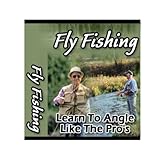Clueless about fly fishing?
Me too!
I have been really curious about this sport for some time now. I’ve seen it done countless of times.
Tried it. Failed.
People have endlessly and tirelessly, with their utmost patience and understanding tried to rub off some fly fishing skills on me – but to no avail.
I have resorted to reading, for now. I decided that whatever I can’t do, I might as well LEARN – even just in theory. It helps. I think of my self right now as “A work in progress”.
Let’s all learn the basics. DEFINITION OF TERMS!
A brief definition about some terms I need to know about fly fishing.
What is Fly Fishing?
Fly fishing is an ancient and distinct angling method, developed primarily for salmonids (trout and salmon, mostly) and now extended to other species such as pike, bass, and carp, as well as a wide range of salt water species.
Fly casting is gripping or holding a fly rod correctly and to adopt the correct stance to maintain comfort and balance. The most basic rule to casting is based on the way a clock looks. Your head points straight up to 12:00, your cast (the tip of your rod) should go back to 10:00 and then forward to 2:00, releasing your line at the end of the forward motion. It is a common mistake to dip the rod below those two positions and almost always ends in a line tangle!
Angler. (Does that have anything to do with Math? I hate Math!)
That would be YOU silly! Someday, IF you learn how to fly fish, you will be called an angler. A person catching fish or shellfish with no intent to sell, this includes people keeping the catch or people that practice the “Catch and Release” method (highly recommended).
The Essentials – If you don’t have a complete list of these, you’re NOT Fly Fishing!
Fly Fishing rods are long, thin, flexible rods sometimes made of bamboo, but more recently from man-made materials. Fly rods tend to have large diameter eyes (or guides) spaced along the rod to help control the movement of relatively thick fly line. To aid in the freedom of movement required to skillfully cast with a fly rod, there is usually little to no butt (handle) extending below the fishing reel. Although fly rods are mainly used for casting from fixed positions, they can also be used for trolling for fish.
Fishing Reel is a device used for the deployment and retrieval of fishing line using a spool mounted on an axle. They are used in conjunction with the fly rod and are attached to the base or handle of the rod.
Fishing line is any cord made for fishing. Important parameters of a fishing line are its length, material, and weight (thicker, sturdier lines are more visible to fish). The refractive index is also important—lines with a refractive index similar to water are almost invisible to fish. The most important parameter in deciding what line to use is its strength. This is the amount of weight the line can hold before snapping. One must balance the trade-off between strength and visibility.
Flies as Bait? Are you kidding?
Flies or Artificial flies are constructed — “tied” onto a hook with thread, fur, feathers and other materials — in sizes and colors to match naturally occurring food or simply to excite a fish. And to add more confusion, the names of flies: Wet and dry flies, nymphs, scuds, eggs, streamers, steelheads, bass flies, salmon flies,and saltwater flies.
You will be considered a well equipped fly fisher if you bring waders, wading boots, vest net, polarized sunglasses to protect your eyes and see through the reflection on the water, a hat for the harsh sun, sun block and bug dope (bug repellant) – if you don’t want to be eaten alive by bugs before you even catch a fish!
Armed with the stuff I read, I went about to experience Fly Fishing without even going near a body of water.
Wondering how?
A site that sells fly fishing products – with pretty pictures too! – Riverbum.com
She is a webmaster for Riverbum.com. Riverbum.com sells fly fishing flies, gears, and accessories on-line. They constantly innovate themselves to give their customers the best products they can offer for unreasonably low prices. They love fly fishing, and it shows!
